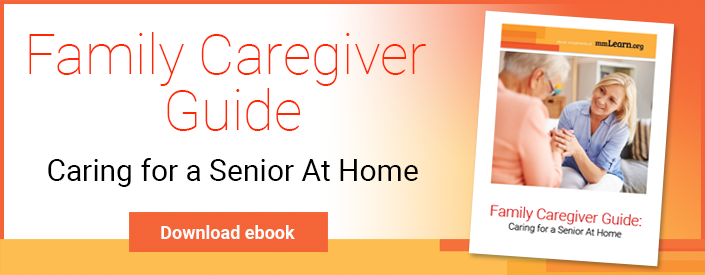 Caregivers are often the first to notice when a senior’s mood or behavior seems “off.” If the senior in your care seems unusually irritable or less interested in previously enjoyable activities, take note. Consistent mood changes, trouble sleeping, and even a decline in personal hygiene are potential signs of depression, which could mean it’s time to seek outside help.
Caregivers are often the first to notice when a senior’s mood or behavior seems “off.” If the senior in your care seems unusually irritable or less interested in previously enjoyable activities, take note. Consistent mood changes, trouble sleeping, and even a decline in personal hygiene are potential signs of depression, which could mean it’s time to seek outside help.
Why Are Seniors at Risk for Depression?
According to Mental Health America, more than two million seniors in the United States suffer from some form of depression, yet fewer than 3% are treated by mental health professionals. Unfortunately, more than half of seniors indicate they believe it’s “normal” to feel depressed as they get older. This mentality can hinder seniors from asking for help.
Aging seniors also experience several risk factors for experiencing depression in the first place:
- Late‑in‑life chronic illness
- Death of loved ones
- Loss of ability to work or drive
- Inability to participate in previously enjoyed activities
Despite these increased risks, depression does not need to be a normal part of aging. In the following video, geriatric psychiatry specialist Dr. Jason Schillerstrom discusses the process of diagnosing and treating depression in seniors.
Signs of Depression in Seniors
Caregivers can play a vital role in identifying mental health issues in seniors and helping them get the help they need. According to the NIH, sadness is not always the primary symptom of depression in older adults.
Others signs of depression may include:
- Anxiety or restlessness
- Feelings of emptiness
- Loss of interest in activities and hobbies
- Pessimism, helplessness, worthlessness, guilt, and irritability
- Lack of energy
- Trouble concentrating and making decisions
- Sudden difficulty falling asleep or oversleeping
- Appetite changes
- Thoughts or preparation for suicide, including recklessness or spontaneous donation of prized possessions
- Drug or alcohol abuse
- Aches, pains, and digestion issues with no clear cause
If caregivers notice these symptoms persisting for more than two weeks, it is best to mention the changing moods or behaviors to the senior’s primary care physician.
Remember, sadness can also be seasonal. Know the signs of seasonal affective disorder (SAD) and the post-holiday blues to differentiate seasonal sadness or depression from ongoing clinical depression.
Post-Holiday Blues
Suicide rates often peak after the holidays — a phenomenon that some experts attribute to a letdown after the end of the celebration. Because of this, January and February are a good time to check in on the mental health of aging seniors.
Seasonal Affective Disorder (SAD)
According to SeniorHealth365, “The elderly are often less mobile, fairly intolerant to cold and may be suffering with underlying conditions that are aggravated in the winter months.” In addition to the same signs as general clinical depression, people experiencing SAD can exhibit other symptoms.
- Oversleeping
- Increased cravings for high‑carbohydrate foods
- Weight gain
- Tiredness
Scientists believe SAD is triggered by reduced exposure to sunlight, which affects the body’s circadian rhythms, serotonin levels, and melatonin production.
In addition to consulting with seniors’ physicians, caregivers can help seniors manage SAD.
- Phototherapy (light therapy)
- Daily walks outdoors
- Opening blinds and curtains to let light in
- Encouraging a healthy diet
How Can Caregivers Help?
Family members and caregivers who observe signs of serious depression in seniors should seek outside help. Although a small portion of suicidal people do not exhibit symptoms, 75% do. Fortunately, depression is treatable once diagnosed.
Caregivers are the first line of defense for seniors struggling with depression or thoughts of suicide. And helping seniors deal with depression involves only a few practical steps.
- Watch for signs and symptoms of depression or suicidal thoughts.
- Carefully monitor seniors who take medications that list depression or suicidal thoughts as a potential side effect.
- Ask aging seniors’ physicians to screen them for depression, along with potential physical triggers such as diabetes, thyroid disorders, multiple sclerosis, Parkinson’s disease, strokes, tumors, and even some viral diseases.
- Enlist help from a physician or mental health professional immediately if you suspect depression in a senior under your care.
Depression in seniors is common, but that doesn’t mean aging adults should go on suffering. In the following video, geriatric psychiatrist Dr. Thomas Weiss provides an in‑depth explanation of symptoms and treatment for seniors experiencing depression.

